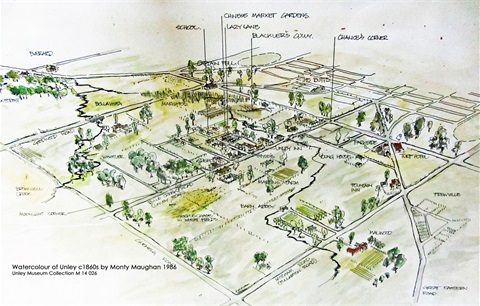How Unley developed

After colonial settlement and by the time of South Australia's Proclamation as a state in 1836, the area of Unley was largely cleared and the land used for agricultural purposes. Orchards and vineyards were planted, dairies, and olive oil and jam making factories opened.
Small villages developed around clusters of shops, schools and churches. Unley and Unley Park were subdivided 1840. Goodwood, Fullarton and Parkside were subdivided in 1849 and Black Forest followed in 1850. Unley acted as a town centre for these growing village communities.
Until 1871, the original villages known as Unley were part of the District Council of Mitcham. When Unley community's combined population reached 2,000, it separated from Mitcham to become the Corporate Town of Unley.
As more people from Europe and Asia came to settle in Unley, the increasing population demanded more housing. Farmland and tracts of native bush and scrub were subdivided and sold as residential building blocks.
Buildings and roads gradually replaced paddocks and farm areas, particularly from the 1880's onwards. As new subdivisions were opened the space between the villages was populated and began to merge. Open land that had been bush and farmland were now filled with houses and Unley gradually grew in to the united community it is today. By 1911, the population in Unley had reached 24,000 people who were living in more than 5,000 dwellings.
People were inspired to campaign to preserve trees and land for parks.
"Spare those trees! It would not cost a great deal to secure … a few allotments on which some of these kings of the old forest are growing - but it must be done soon or never." The Register, 1911.
The concept of the 'City of Villages' survives today in the varying characters of the suburbs and shopping precincts that combine to make up the City of Unley.